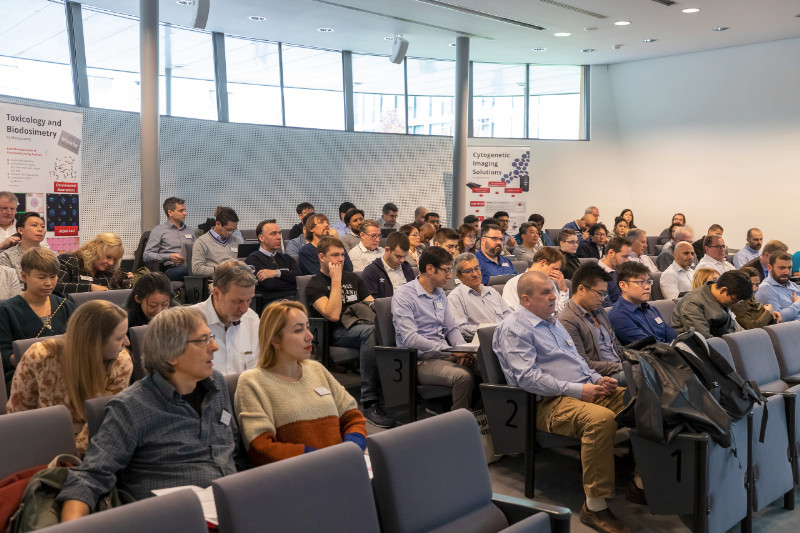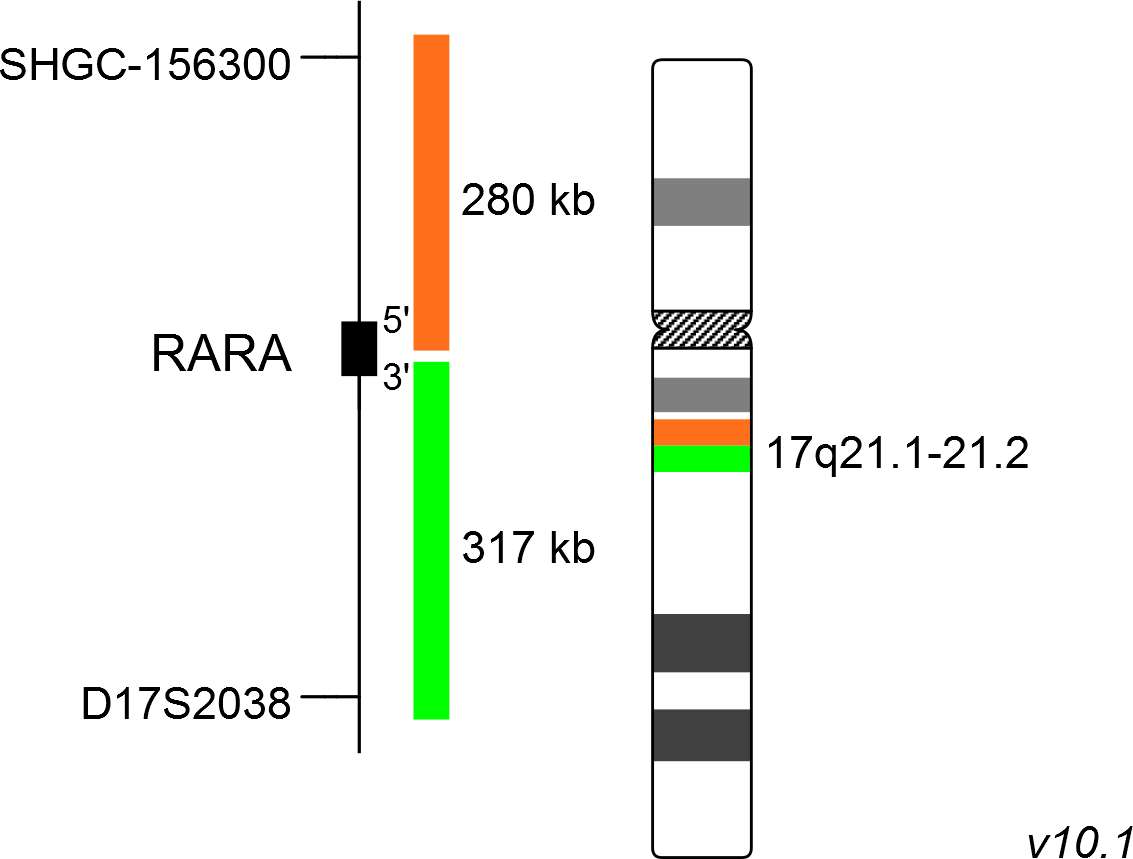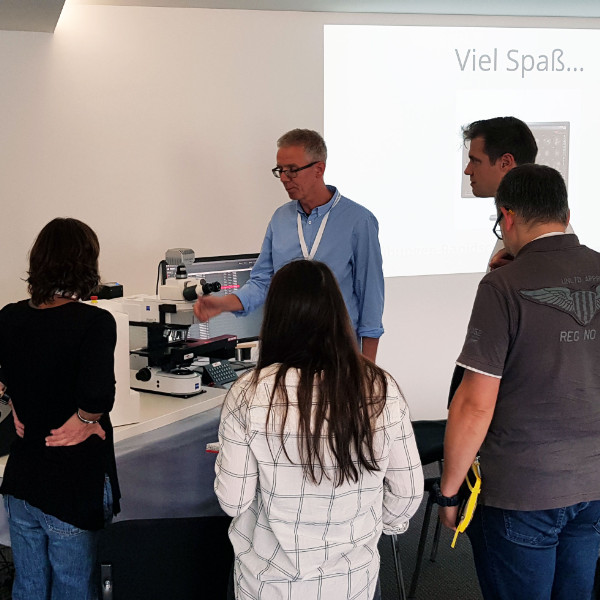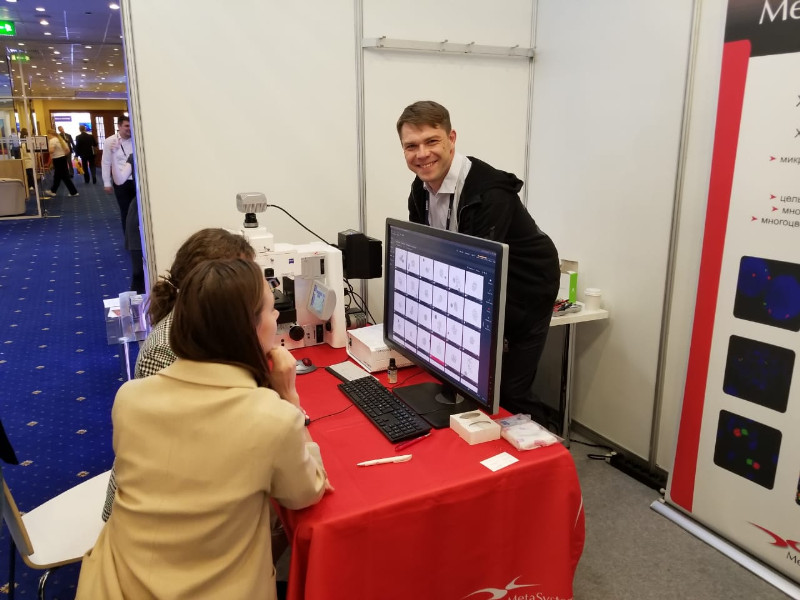About 100 guests from 36 countries met on the XVIII. MetaSystems Distributor Meeting (DM) in November to exchange experiences and to get to know new trends and developments at MetaSystems.

Our internet site may contain information that is not approved in all countries or regions. To ensure accuracy of content, please select your country/region of residence. Choose International if your country is not listed.
This information will be saved using cookies. To find out more about cookies, read our Privacy Policy.
Please select your country of residence. Choose International if your country is not listed.
Our internet site may contain information that is not approved in all countries or regions. To ensure accuracy of content, it is required that you select the site which is appropriate for your country of residence.
Based on your previous selection, you have been forwarded to the website for International.
This probe is IVDR-certified in compliance with the Regulation (EU) 2017/746 on in vitro diagnostic medical devices (IVDR).
MetaSystems Probes has already certified a large part of its portfolio, according to IVDR. For organizational reasons, we currently provide only the IVDD product.

XL RARA BA consists of an orange-labeled probe hybridizing proximal to the RARA gene region at 17q21.1-21.2 and a green-labeled probe hybridizing distal to the RARA gene region at 17q21.1-21.2.
Probe maps are created in accordance with the intended purpose of the product. Solid colored bars do not necessarily indicate that the probe fully covers the indicated genomic region. Therefore, caution is advised when interpreting results generated through off-label use. Probe map details based on UCSC Genome Browser GRCh37/hg19. Map components not to scale. Further information is available on request.
Acute promyelocytic leukemia (APL) is considered as a subtype of acute myeloid leukemia (AML) and accounts for about 5-8% of all AML cases. The most frequent aberration in APL is t(15;17) which results in the formation of the promyelocytic leukemia (PML) - retinoic acid receptor alpha (RARA) fusion gene (PML-RARA). Around 98% of all APL cases are characterized by PML-RARA, whereas translocations affecting RARA and other genes have been identified in only 1-2% of APL cases. Known fusion genes are ZBTB16-RARA, NPM1-RARA, NUMA1-RARA, STAT5B-RARA, PRKAR1A-RARA, BCOR-RARA and FIP1L1-RARA. ZBTB16-RARA comprises about 0.8% of all APL cases, the other rare fusions occur with lower frequency. Cryptic rearrangements resulting in the PML-RARA fusion gene are observed regularly, but also insertions of RARA into other locations have been found in a minority of APL cases.
RARA is a nuclear hormone receptor which forms heterodimers with the retinoid X receptor alpha and is involved in the regulation of promyelocyte differentiation. RARA fusion genes interfere with myeloid differentiation and contribute to the development of APL. The majority of APL patients are responsive to therapeutic doses of all-trans retinoic acid (ATRA) and arsenic trioxide (ATO) associated with chemotherapeutic drug regimen. Patients with ZBTB16-RARA or STAT5B-RARA fusions are resistant to ATRA and ATO.
The FISH break apart assay is a valuable tool for the detection of RARA rearrangements independent of the translocation partner.

Normal Cell:
Two green-orange colocalization/fusion signals (2GO).

Aberrant Cell (typical results):
One green-orange colocalization/fusion signal (1GO), one separate green (1G) and orange (1O) signal each resulting from a chromosome break in the respective locus.
Neon, the outstanding MetaSystems case and image management system, offers many tools and helpful gadgets to streamline routine workflows, for example in cytogenetics labs. The second MetaSystems User Day, addressed to MetaSystems clients from Germany, Austria, and Switzerland, provided in different workshops knowledge helping to unleash the full power of the system.

The Congress 'Genetics of XXI Century' in Moscow, Russia (May 2019) has been one of the most important events for the professional international community of geneticists. Our partner company in Russia OOO MetaSystems considered it a good occasion to present the new camera CoolCube 4 connected to a state-of-the-art Neon system to the public.
